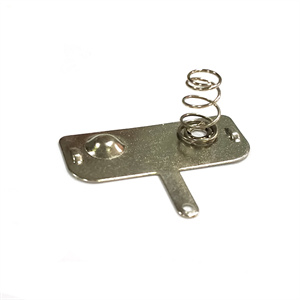The commonly used materials for battery contact plates mainly include the following:
Copper: Copper is one of the most commonly used materials, because it has excellent conductivity and corrosion resistance, can meet the conductive needs of battery contact plates when working, and has good stability and durability. Among them, copper and brass are both commonly used copper materials. Copper has high purity and the best electrical conductivity, while brass is an alloy of copper and zinc, which not only has good electrical conductivity, but also has excellent mechanical properties and machinability.
Aluminum: Aluminum battery contact plates are lightweight and hard, so they are also widely used in some applications where weight is required. Although aluminum is slightly less conductive than copper, its lightweight and corrosion resistance are advantageous in certain situations.
Nickel: Nickel has excellent electrical conductivity and corrosion resistance, especially in high temperature and high humidity environments. As a result, nickel battery contact plates are widely used in circuits and battery packs that require high temperature resistance, corrosion resistance, and high electrical conductivity.
Zinc: Although zinc is inferior to copper and nickel in terms of electrical conductivity and corrosion resistance, it is also used as a material for battery contact plates in some cases due to its good processability and relatively low price.
In addition to the common materials mentioned above, there are also metal materials such as stainless steel that may also be used as battery contact plates. Although stainless steel is slightly less conductive and machinable than copper, it has better corrosion resistance and stability when used in some harsh environments.
When selecting the material of the battery contact plates, it is necessary to comprehensively consider the conductivity, corrosion resistance, mechanical strength, cost and working environment of the material to ensure that the contact piece can meet the working requirements of the battery and has a long service life.
